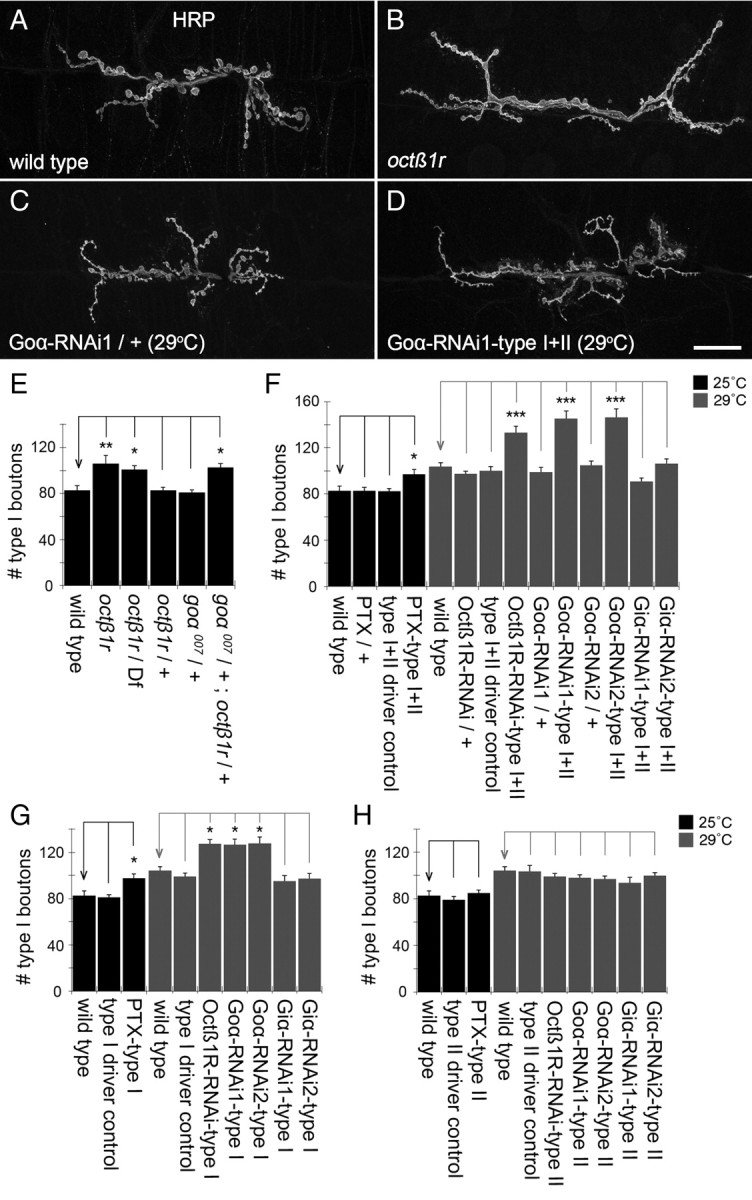Figure 7.

Octß1R negatively regulates type I synaptic growth in a cell-autonomous manner. A–D, Third-instar larval NMJs at muscles 6/7 of wild type (A), octß1r mutant (B), Goα-RNAi1/+ control (reared at 29°C) (C), and Goα-RNAi1-type I+II (reared at 29°C) (D), showing a marked increase in the number of type I boutons. NMJs were labeled with anti-HRP. The panels represent confocal Z-stack projections. E, Quantification of type I boutons at muscle 6/7 in octß1r mutants, octß1r/+ heterozygotes, goα007/+ heterozygotes, and goα007/+; octß1r/+ transheterozygotes, showing that octß1r mutants and goα007/+; octß1r/+ transheterozygotes have increased number of type I boutons [N (left to right) = 18, 15, 16, 16, 12, 18 NMJs]. F–H, Quantification of type I boutons at muscle 6/7 in animals expressing PTX, Octß1R-RNAi, Goα-RNAi, or Giα-RNAi in type I and type II (F), type I (G), and type II (H), showing that the disruption Octß1R or Goα in type I and type II simultaneously or type I alone increase type I boutons [N (left to right) = 18, 14, 14, 16, 15, 12, 14, 12, 12, 16, 12, 16, 14, 16 NMJs in F; N (left to right) = 18, 12, 16, 15, 13, 18, 12, 10, 12, 13 NMJs in G; N (left to right) = 18, 12, 14, 15, 11, 12, 16, 16, 10, 16 NMJs]. Animals used in RNAi experiments were reared at 29°C to increase knockdown efficiency. Scale bar: A–D, 10 μm. Error bars indicate SEM. ***p < = 0.0001; **p < = 0.001; *p < 0.05.
